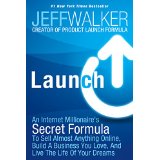
From my book “Use Metrics to Know What Works“…
One of the hallmarks of successful entrepreneurs is that they take action. They don’t wait for the time to be perfect or for some mythical moment when everything lines up, they get busy and get going. This is a hugely important trait for success, but it can also be a curse. The problem is that many entrepreneurs are so action oriented that they go off in random directions with no plan. It’s not enough just to take action – you have to be taking action on the right things.
This is where a lot of entrepreneurs get into trouble. Yes, you do need to be taking consistent action, but if you don’t take some time first to determine what you should be doing there’s a good chance of not getting the results you want. The problem is that it is really hard for an action-oriented entrepreneur whose idea keeps him up at night to take a step back and do some research and planning. Later, the problem becomes taking the time to measure and analyze results when you would rather be doing more.
So many business operate like this:
- Start doing something in hopes of growing your business
- Sales don’t come as desired
- Add another activity
- Repeat
Can you see the problems with this approach? First, you can only repeat this cycle for so long. There is an absolute upper limit to the amount of activity that you can add to your business. At some point, you will run out of hours in the week. Second, if you keep adding new things without taking away anything you’ll end up with a bigger and bigger list of activities to keep up with. Your attention becomes split and you end up expending a lot of energy switching between and managing all your projects. Third and most serious is that you have absolutely no way to improve. There’s no feedback or indication of what’s working or not and how to improve. This is the biggest problem of all because testing, measuring and adapting is the only sure way you have of making sure you are on a path of continual improvement. Continuing to blindly add activities with no clear plan is like trying to get across town on your bicycle by pedaling faster and making random turns. If you don’t stop and consult a map before and during your trip, you won’t know if you are even heading in the right direction. All of that activity may actually be taking you further from your destination.
It’s almost impossible to get things just right on the first try. That’s where being action-oriented is an asset – as an action taker you just get out there and do something. However, the shortest path to success after you take action is to learn from that experience and adapt your next attempt.
When you take action with no planning, there is no way to measure and no way to close the loop. Everything you do will be just random shooting in the dark with no way to adapt and learn. Often the only feedback you get is “that didn’t work.”
For all of these reasons, metrics (i.e. measuring your results) is often one of the first areas I work on with my clients because we really can’t begin coaching and moving forward effectively until they have a feedback loop in place. As much as I wish I could, I simply can’t pull the right answers out of nothing. I need data to work with in the first place and a way to measure results once our ideas are implemented.
If you aren’t doing any metrics, or you want to see how metrics can help you, head over to the Kindle store and grab my book “Use Metrics to Know What Works.” This article is taken from Chapter 1, and the rest of the book teaches you not only the principles of metrics but how to do metrics for specific purposed in your business. Grab your copy here:
Use Metrics to Know What Works
(No Kindle device? No problem! You can download a free Kindle app for your phone or tablet, or install the free Kindle reader for your desktop.)

 When you are trying something new in your business, it’s almost impossible to get it perfect on the first try. That’s why I suggest that you always be experimenting with your business. Even if a new idea that you try works out great, it’s valuable to learn why it worked and how to repeat it.
When you are trying something new in your business, it’s almost impossible to get it perfect on the first try. That’s why I suggest that you always be experimenting with your business. Even if a new idea that you try works out great, it’s valuable to learn why it worked and how to repeat it.






